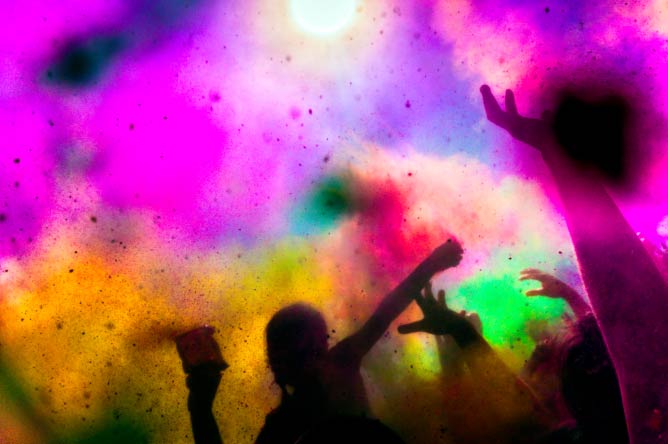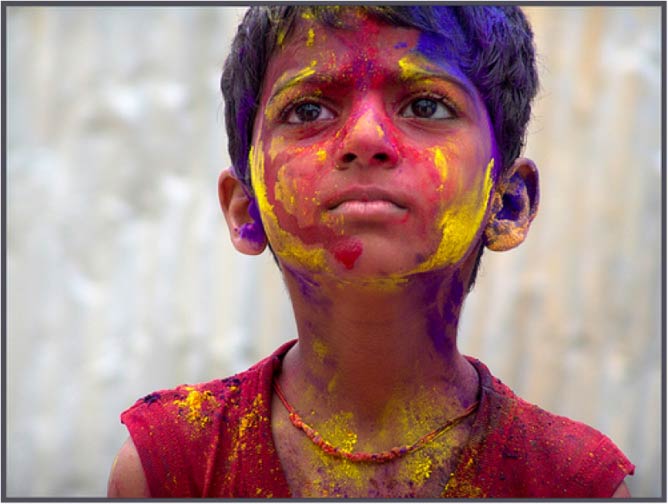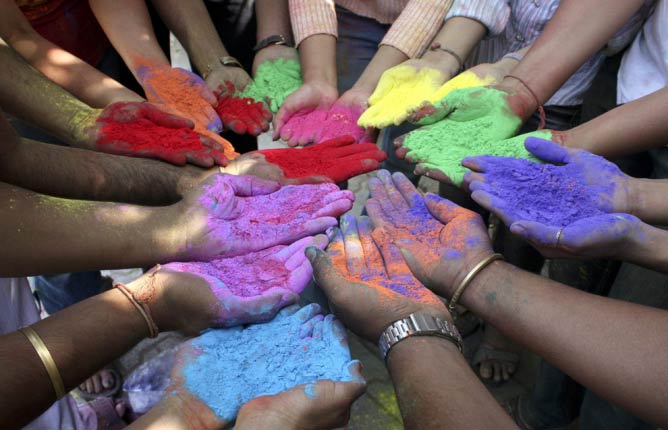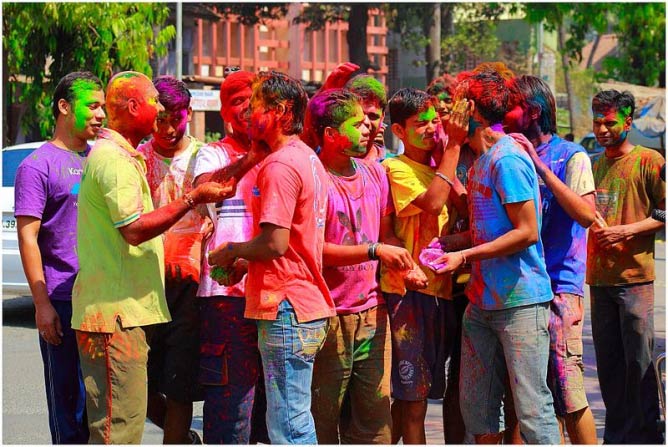Holi : India's festival of colours
 •
by
•
by Bombay bomb
We celebrate Holi in India on 2nd March 2018 this year. Read here to know more about it...

Religion, bonfires and an abundance of colored chalk — India’s Holi Festival could just be one the world’s most beautiful celebrations. Faces were masked with color, and social rules were relaxed last weekend in India; it’s no surprise that numerous communities overseas are also jumping on the multi-colored bandwagon and wishing each other a ‘Happy Holi’ too.

Every year, the Holi Festival brings a rainbow of chalk to the streets of India. The Holika bonfire is ignited the night before the Holi, bringing people gathered together for an evening of dance and song. The following day, the bonfire gives way for a free-for-all carnival of color. Participants play, chasing each other with colored water and powder. The festival’s intention is to bring together strangers, uniting the rich and poor, men and women, children and elders — people who might not mingle otherwise.

Holi, the festival of colors, is celebrated in the month of Phalgun (February-March).
Also called Phagwah, it is the full moon day in Phalgun that ushers in the spring season in India. It is also a celebration of the harvest season.

The Holi Festival is known for being the festival of colors, or the festival of love. As an ancient Hindu religious festival, Holi has also become popular with non-Hindus in South Asia, as well as communities outside of the continent. Holi has become a popular festival in Europe in the form of a music festival, featuring songs accompanied by an exuberant riot of color on streets and buildings.

The festival gets its name from the Puranic story of Holika. Holika was the sister the demon-king Hiranyakashipu. The king, egoistic as he was, desired that everybody in his kingdom worship him alone. Much to his ire, he found that his son, Prahlada, was a worshipper of Lord Vishnu. It was then that Hiranyakashipu decided to kill Prahlada in connivance with his sister. Holika had been granted a boon that gave her the power to remain unaffected by fire. To lure Prahlada into a fire, Holika sat him on her lap and pretended to play with him while Hiranyakashipu ordered his men to set the place where they sat on fire. It was then that Holika's boon failed her. In her sinister venture to kill the Lord's devotee, Holika was burned to ashes while Prahlada came out unscathed.
Another reason why Holi is significant is its association with Raasleela, the Divine Dance that Lord Krishna performed for the gopis , his devotees in Vrindavan on this day.

‘Holi' comes from the word ‘hola' which means sacrifice. And the festival is a reminder that we must live our lives in a spirit of service and sacrifice.
Holi symbolises victory of our higher aspirations over our lower, base desires. It is the burning of our petty, material desires at the altar of our goal of self-development. It stands for the victory of good over evil, a theme that runs through every Indian festival. For it is impossible that those who live their lives by truth will ever be overcome by the corrupt.

Another important aspect of Holi is its joy and fun. Contrary to common perception, spirituality is about enjoying life to its fullest. The spiritual life is not about giving up our possessions but discovering higher, permanent joys. It is a path filled with serendipity and moments of sheer joy reflected in the life of Lord Krishna.

So on Holi, we must remember to bring the color into our lives. So Happy Holi everyone or as they say in Hindi, Holi Hai!!! 🙂
VOTE
ENDORSE
SUBSCRIBE
COMMENT
SHOUT


Comments
Holi : India's festival of colours
erepublik.com/en/article/2665557
Happy Holi ! 😃
very nice, did you enjoy it?
very nice 😀
Bombay 💣
Very nice. Thanks for sharing o/
Happy Holi \o/
very nice!
Holi Hai!!!
Fantastic 😃 The colours are incredible !
Happy Holi!
its fun
o7
Happy Holi!
Nice!
Happy Holi!
Happy Holi friend !
I like India, music, dancing, food ... everything o/
Holi Hai